I have an Armstrong boring head #84-211 that has the threads messed up on the inside of the boring head where the shaft that the dial shaft turns on. It appears that the inside of the head has a soft material (lead ?) inside that is threaded for the 3/8 x 40 shaft. Has any of the members encountered this with this boring head to advise how to remove this material to install or make a liner to install in the head. I have a tap to make the threads of I can get the metal out of the head. I don't want to start drilling until I get some information. If anyone can help, I would appreciate any advice.
-
Welcome back Guest! Did you know you can mentor other members here at H-M? If not, please check out our Relaunch of Hobby Machinist Mentoring Program!
You are using an out of date browser. It may not display this or other websites correctly.
You should upgrade or use an alternative browser.
You should upgrade or use an alternative browser.
Repair old boring head?
- Thread starter ScrapMetal
- Start date
4
4GSR
Forum Guest
Register Today
That's an old Flynn boring head, want to say a No. 35 or 45. I don't recall them being made in Germany, but very well could have been. The holes are purposely made that way for holding different styles of boring bars. But mainly for getting out a boring bar that the shank has buger marks from set screw damage. They have replaceable shanks on them in case you need another taper shank. The shanks appear on eBay every once in a while. Flynn made a nice heavy duty boring head in its day. Criterion style boring head pretty much took over the market today with most being made in Asia.
- Joined
- Jan 22, 2011
- Messages
- 8,031
gmcken, that material won't be lead. You're going to need to tear it down and remove that piece and make a new one, probably out of brass. Good thing you have the tap, that is a special.
This would be a good project for another "how to" thread. I'm sure someone else will run into this sooner or later and it would be nice to have a documented repair on record.
This would be a good project for another "how to" thread. I'm sure someone else will run into this sooner or later and it would be nice to have a documented repair on record.
- Joined
- Jan 22, 2011
- Messages
- 8,031
Before you get too far along, can we see some pictures? Might be a simple fix that someone has done before.
- Joined
- Dec 15, 2014
- Messages
- 53
To All:
The design is made for a purpose. There must be clearance between the hole and a shank to allow a cylindrical shank to enter. When you have a simple round hole, the set screws apply force from one side directly producing line contact on the opposite side. The result is two single lines of contact and no support in between. When/if a small amount of material is removed, opposite the screw, the result is three lines of contact that add significant stability to the boring tool. However, the tool should have
a shank diameter close to that of the bore diameter.
The pictures below are of an old Erickson Tenth-set Boring Head. The first photo has a .5000 gage pin in the bore, still snug after 25 years.
Best Regards, Gary
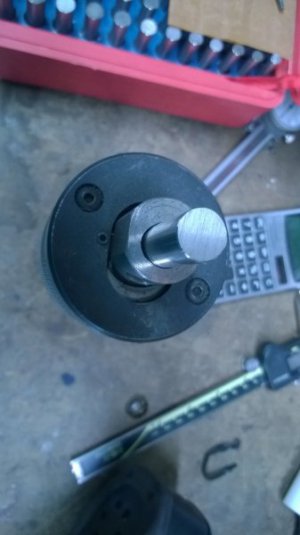
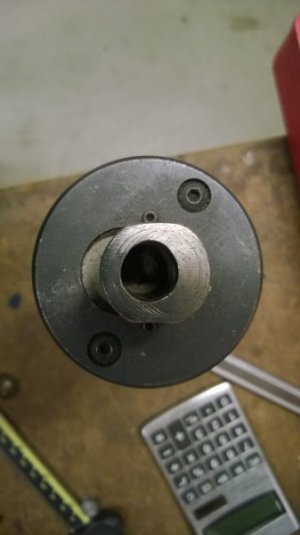
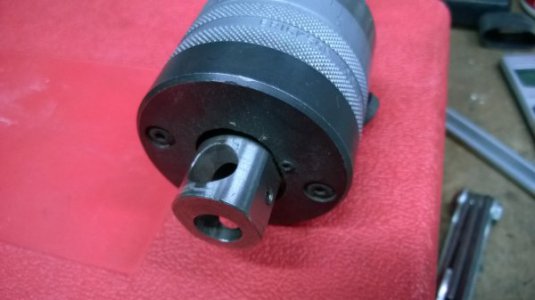
The design is made for a purpose. There must be clearance between the hole and a shank to allow a cylindrical shank to enter. When you have a simple round hole, the set screws apply force from one side directly producing line contact on the opposite side. The result is two single lines of contact and no support in between. When/if a small amount of material is removed, opposite the screw, the result is three lines of contact that add significant stability to the boring tool. However, the tool should have
a shank diameter close to that of the bore diameter.
The pictures below are of an old Erickson Tenth-set Boring Head. The first photo has a .5000 gage pin in the bore, still snug after 25 years.
Best Regards, Gary



I repaired the boring head today by making a sleeve out of brass rod. The head was bored 7/16" .400 deep to hold the new sleeve. The sleeve was made out of a 1/2" brass rod which was turned 7/16" .400 long. The sleeve was bored with a Q letter bit and tapped 3/8 x 40. After parting to length, thread was cleaned and a test fit made on the parts. Sleeve was locked in place with lock tight. I hope this helps anyone needing to repair threads in another head.
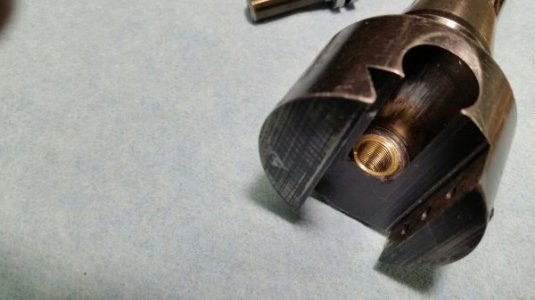
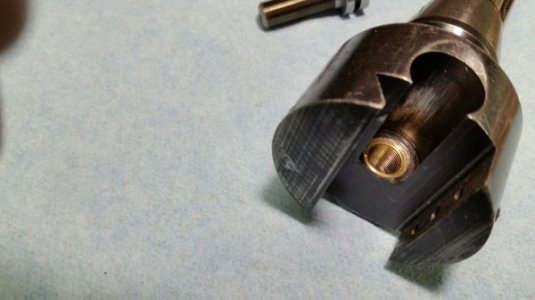
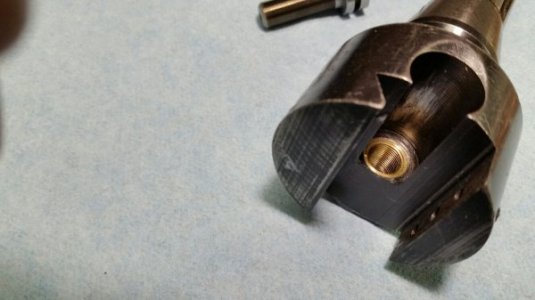
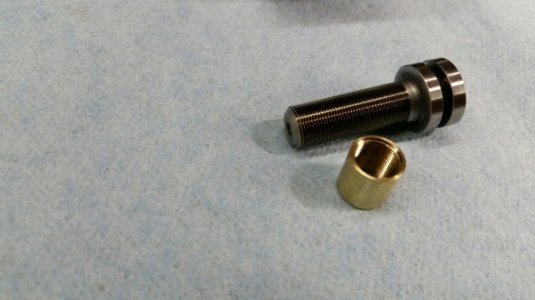
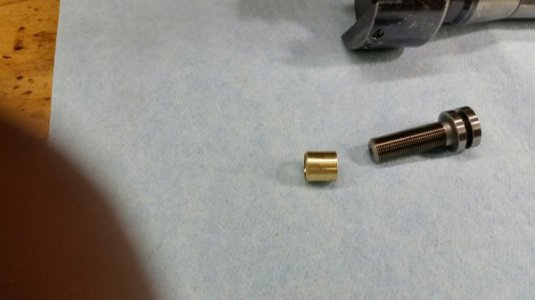
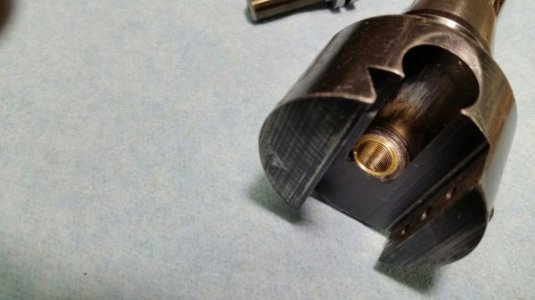
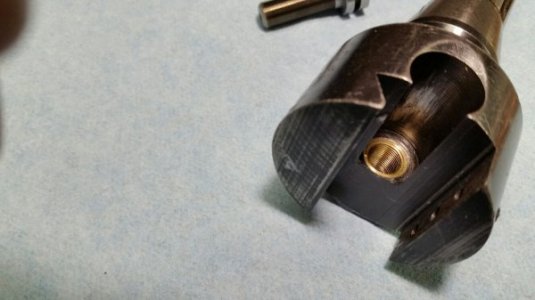
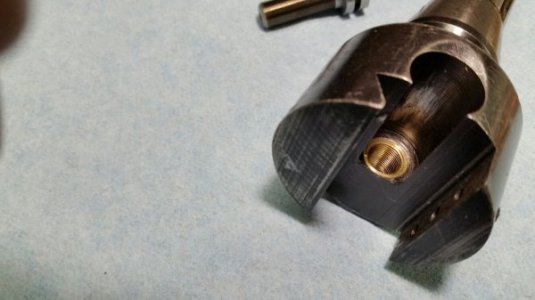
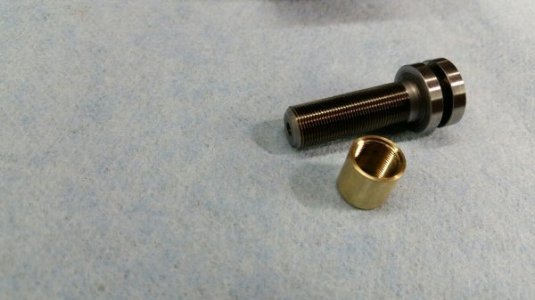
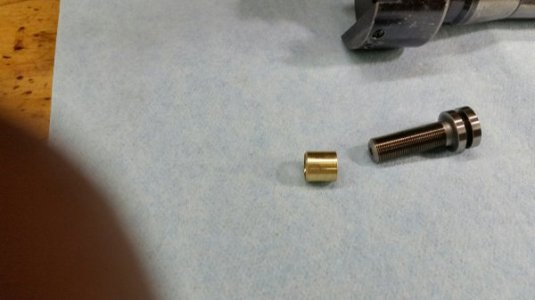
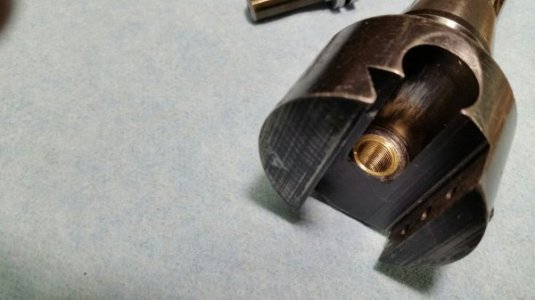
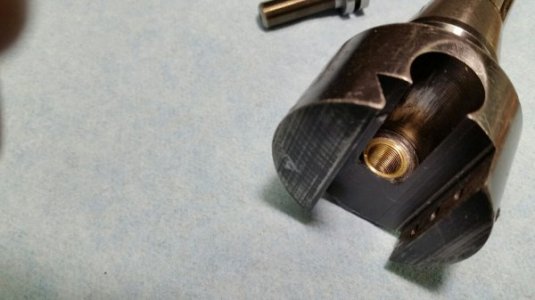
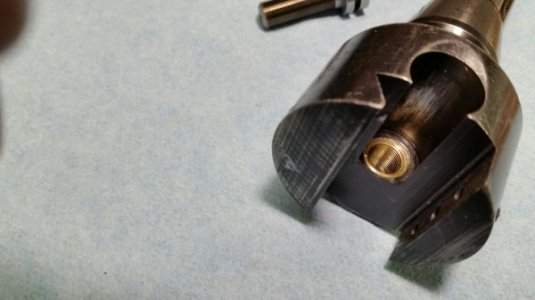
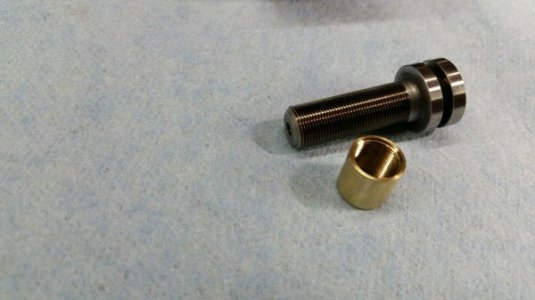
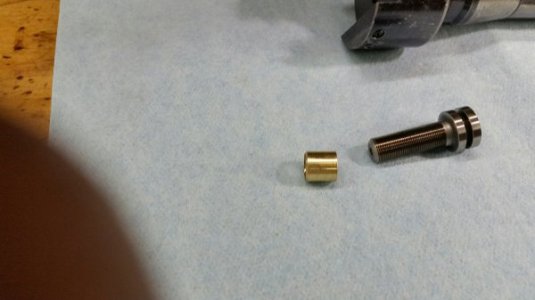















- Joined
- Jan 22, 2011
- Messages
- 8,031
Thanks Ken. It was a little OT, but it's nice to see how a repair can be done in a situation like yours.

